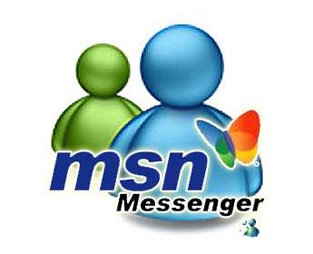
This week, it was revealed that nearly a quarter of the companies on Million Dollar Homepage, one of the most original business ideas of the Noughties, no longer existed. Although it seems like only yesterday, we are nearly half way through the second decade of the 21st Century, so what better time is there to look back at some of our tech favourites from the first ten years?
Nokia 3310
Rightly regarded as one of the best mobile phones of all time, the Nokia 3310 was released in late 2000. It remains one of the most successful devices of all time, selling 126 million units and gaining a huge online cult following to this day, gaining praise for its extensive battery life and near-indestructible construction.
Boasting many pioneering features, including a calculator, stopwatch and a reminder function, the 3310 also allowed interchangeable cases, letting you personalise your phone however you wanted. And of course, it also featured what many people consider to be the best mobile game of all time – Snake II.

MySpace
The granddaddy of social media, MySpace was the place to be for much of the early Noughties. Launched by the ubiquitous ‘Tom’ in August 2003, MySpace quickly became widely popular thanks to its customising abilities. Many celebrities and bands used the service to popularise their brands and output, creating in effect the first main online media hub.
At its peak, MySpace was the most visited social networking site in the world, and even surpassed Google as the most visited website in some countries. Millions agonised about what song people would hear when they went onto your page, or worried about who to have as your top eight friends.
Still limping on today (mainly thanks to recent investment from pop icon Justin Timberlake), MySpace may not ever regain its past heights, but will doubtlessly remain an important part of Internet history.

MP3 Players
Taking over from the Walkman and other CD players, the wide range of MP3 players (lorded over by Apple’s iPod, first released in October 2001) allowed users to carry around a mix of songs by their favourite artists. Equipped with USB connectivity so that it was easy to upload songs from your PC or laptop, we still remember agonising over which songs to put on our 128MB pen-drive MP3 player.
Sony’s MiniDisc format must also get a mention here, as it offered a high-quality alternative to the often limited MP3 storage, with a possible 1GB of storage.
Motorola RAZR
Another close runner for phone of the decade, the Motorola RAZR (and the Razr V3i version in particular) was the smooth, stylish alternative to the Nokia 3310’s brute simplicity. Featuring a slim and striking clamshell flip design, (it was initially marketed as an exclusive fashion device) the phone won widespread admiration and envy towards its users. During its four-year life on sale, the V3 model sold more than 130 million units, becoming the best-selling clamshell phone in the world to date.
However the success of the device left Motorola over-reliant on one offering, meaning it fell behind in the smartphone sector and was overtaken by other vendors, a situation it has only recently fixed.

Napster
Whisper it quietly, but it’s possible that many of us may have dabbled in a little bit of Internet piracy during some point in the 00’s. Ripping songs from our extensive CD collections to put onto our sparkly new MP3 player took forever, and what if you just had to have a brand new song? First Napster, and then Kazaa and Limewire introduced us to getting what we wanted (relatively) quickly, whilst also giving us a mild adrenaline rush.

MSN Messenger
Although technically it was still running until Microsoft replaced it (cruelly) with Skype last year, MSN Messenger has to deserve an inclusion in this list for the integral part it played in many of our lives. We remember rushing home from school to continue talking to people for hours, despite the fact we had just seen them, even if you did get disconnected every so often because your mum needed to use the phone.

The Sims
Released in February 2000, The Sims revolutionised computer gaming for many of us, and was for several years the biggest-selling game of all time, spawning multiple sequels and expansion packs. Giving you complete control over your community of Sims, the game let you build a house, get a job, make friends, fall in love – basically all the stuff you did in real life, but more fun.
Just watch out for malfunctioning fire alarms or disappearing swimming pool steps – we hear they can be deadly.

Friends Reunited
Also known as the social media site your parents loved, Friends Reunited was a major early success for the British tech scene in the Noughties, proving that networking online wasn’t just for young people. Set up by three friends keen to find out what had happened to former classmates, the site launched in July 2000, and within a year counted 2.5 million members. It was bought by ITV in 2005, when it boasted 15 million members, but was hit hard by the rise of Facebook, with visitor traffic tailing off sharply. Following several sales, the website is now part of the DC Thomson Family History umbrella site.

Second Life
The game that introduced online multiplayer gaming to the masses, Second Life (originally released June 2003) was much like The Sims, but with a bigger focus on building and socialising around your own personal avatar. The game encompassed business, religion, music, and even politics, with Sweden, the Maldives and the Philippines among a number of countries to establish embassies in the game’s world.
Although it was hit with a string of controversies and criticism for its player behaviour and content (a number of major lawsuit concerned the legal status of the game’s currency, the Linden Dollar), Second Life, which still attracts around a million users a month, was an important influence on many modern games, from World of Warcraft to Minecraft.

And one thing we don’t miss…MASSIVE SCREENS
Technological progress really is a beautiful thing. Flat screens now dominate offices and homes across the world, with LCD and LED technology providing a crisp, clear display. But this wasn’t always the case. As the Noughties dawned, computing was still dominated by huge, ugly beige boxes, with glass screens taking up most of the desk space you had available. Thankfully, this was shortlived, and as we said, progress is a beautiful thing.








